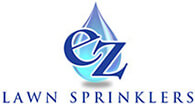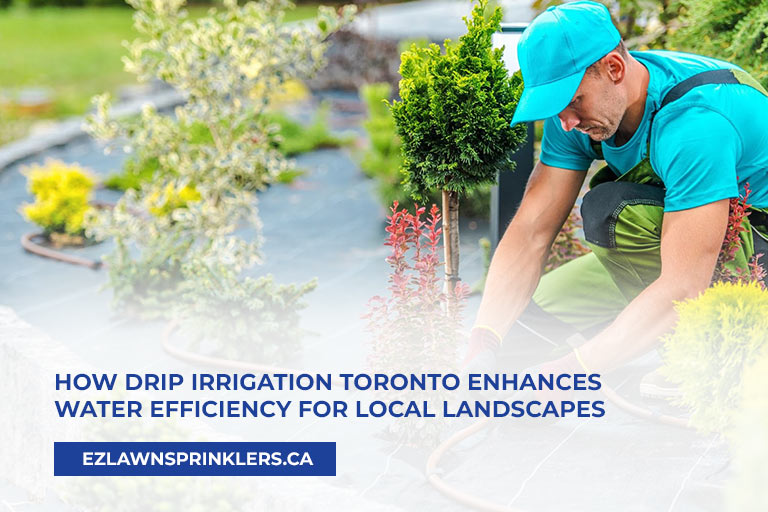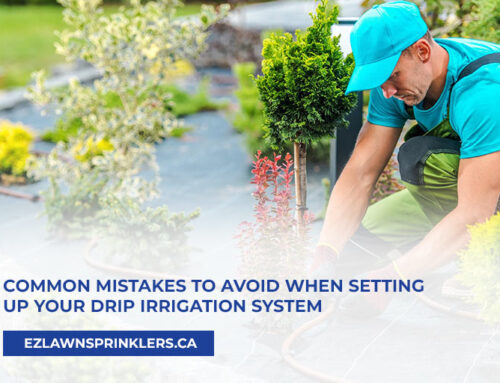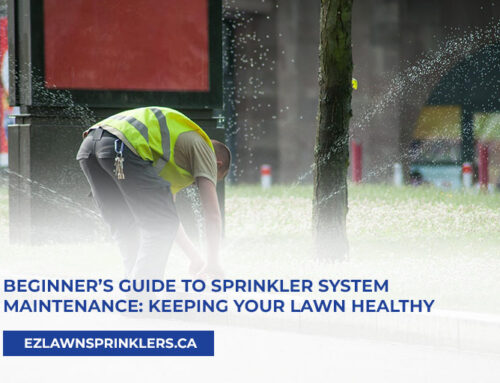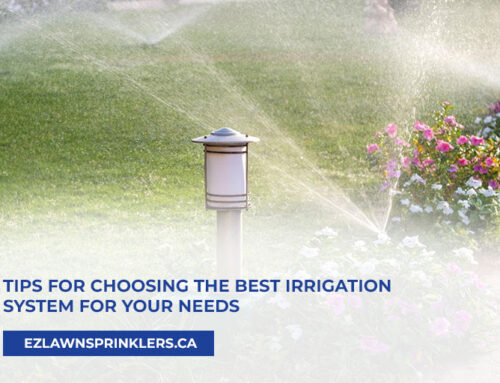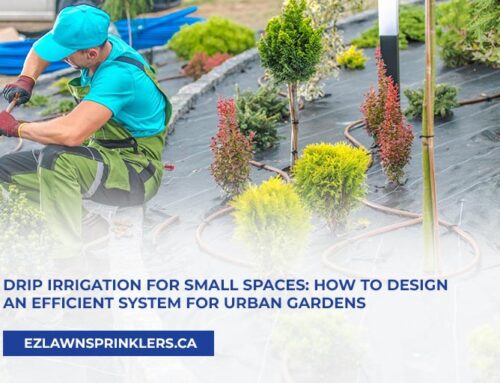In an era where water conservation is increasingly critical, efficient landscaping practices have become essential. Drip irrigation, a method praised for its water-saving capabilities, is gaining popularity in Toronto.
According to a post in OPE+, drip irrigation can reduce water usage by 30 to 70 percent compared to traditional sprinkler irrigation systems. Let’s explore how drip irrigation enhances water efficiency for local landscapes, making it a sustainable choice for homeowners and businesses alike.
What is Drip Irrigation?
Water is delivered directly to plant root zones via drip irrigation, a precision watering technique that uses a system of emitters, pipes, valves, and tubing. This system allows for slow and steady water application, minimizing waste and ensuring that plants receive the optimal amount of moisture.
Basic Components
The primary components of a drip irrigation system include:
- Emitters: These small devices release water in a slow and controlled manner.
- Tubing: Flexible pipes that transport water from the source to the emitters.
- Filters: Essential for preventing clogging by removing particles from the water.
- Valves: Control the flow and distribution of water through the system.
Comparison with Traditional Irrigation
Unlike traditional sprinkler systems that spray water over a wide area (often resulting in substantial evaporation and runoff) drip irrigation targets specific areas. This targeted approach ensures that each plant receives adequate water without over-saturating the surrounding soil, leading to more effective water usage and healthier plants.
Benefits of Drip Irrigation
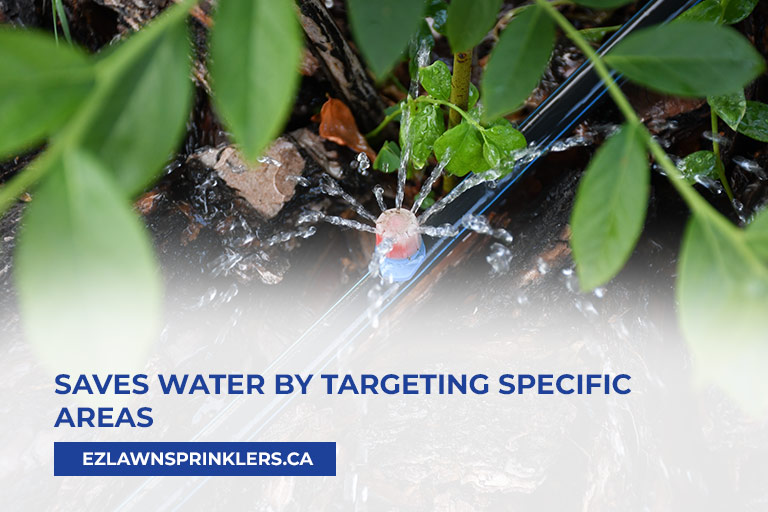
Aside from water efficiency, drip irrigation offers many advantages.
- Environmental Impact
Using drip irrigation has numerous positive environmental effects. By promoting sustainable water use, especially in urban areas like Toronto, drip irrigation helps conserve a vital resource.This method also reduces soil erosion and nutrient leaching, as the controlled water flow prevents the excessive washing away of soil and nutrients. This contributes to healthier soil and plant growth, supporting a more sustainable ecosystem.
- Cost-Effectiveness
Although the initial installation cost of a drip irrigation system can be higher than traditional systems, the long-term savings are substantial.Reduced water consumption leads to lower water bills, and the targeted watering approach decreases the need for fertilizers and pest control, as plants are healthier and less stressed. Many Toronto residents and businesses have reported significant cost savings and improved landscape health after switching to drip irrigation.
- Enhancing Plant Health
Drip irrigation provides consistent moisture levels, which is crucial for plant health. This consistency reduces the risk of plant diseases and weeds, as the soil surface remains relatively dry. Toronto gardens and landscapes using drip irrigation often showcase thriving plants with robust growth and vibrant health.
Installation and Maintenance
Installing and maintaining a drip irrigation system is straightforward and cost-effective.
- Planning: Begin by mapping out your garden or landscape to determine where the drip lines and emitters will be placed. Consider the types of plants and their water needs.
- Assembly: Gather the necessary components, including tubing, emitters, filters, and valves. Lay out the tubing along the planned routes and connect the emitters near the plant bases.
- Connection: Connect the system to a water source, such as a garden hose or a main supply line. Install a pressure regulator and filter to ensure consistent water flow and prevent clogging.
- Testing: Turn on the water to test the system. Check for leaks and ensure that water is being delivered evenly to all plants. Make adjustments as needed.
Maintenance Tips
- Inspect the system periodically for leaks, clogs, and wear. Replace damaged components promptly to maintain efficiency.
- Clean the filters regularly to prevent debris from clogging the emitters. This ensures a steady and uninterrupted water flow.
- Adjust the watering schedule based on seasonal changes. During cooler months, reduce the watering frequency, and increase it during hotter periods.
- In colder climates, winterize the system by draining the water and storing removable components indoors to prevent freezing damage.
Local Resources and Support
Toronto offers a variety of local resources and support for those interested in drip irrigation.
Local Suppliers and Experts
- Gardening Stores: Many local gardening stores offer a range of drip irrigation products and accessories.
- Specialty Suppliers: Companies provide specialized drip irrigation systems and components.
- Professional Installers: Look for local landscaping companies that offer installation services for drip irrigation systems.
Government Incentives and Programs
- City of Toronto Programs: The City of Toronto offers several programs and incentives aimed at promoting water conservation.
- Provincial Initiatives: Ontario’s Greenbelt Plan supports sustainable landscaping practices, encouraging the use of efficient irrigation methods like drip systems.
Additional Resources
- Educational Workshops: Participate in workshops and seminars offered by local gardening clubs and environmental organizations, such as the Toronto Botanical Garden.
- Online Resources: Websites like the Ontario Ministry of Agriculture, Food and Rural Affairs provide valuable information and guides on drip irrigation.
Hiring Professionals for Drip Irrigation
Enlisting professionals to install and maintain drip irrigation systems, or lawn sprinklers in Toronto, can ensure optimal performance and longevity.
Benefits of Hiring Professionals
- Expertise and Experience: Professionals bring extensive knowledge and experience, ensuring the system is installed correctly and tailored to your landscape’s specific needs.
- Customized Solutions: They can design a system that takes into account plant types, soil conditions, and water availability, providing a customized solution for maximum efficiency.
- Quality Installation: Professional installers use high-quality materials and follow best practices, reducing the risk of leaks, clogs, and other issues.
- Time Savings: Hiring experts will save you time and effort, allowing you to focus on other gardening or landscaping tasks.
Finding the Right Professional
- Research and Referrals: Start by researching local companies and asking for referrals from friends, neighbours, or gardening clubs.
- Check Credentials: Ensure the company or individual has the necessary certifications and licenses. Membership in professional organizations, such as Landscape Ontario, can also indicate a commitment to industry standards.
- Get Multiple Quotes: Obtain quotes from several providers to compare services, pricing, and timelines.
- Review Portfolios and Testimonials: Look at past projects and read customer reviews to gauge the quality of their work and customer satisfaction.
Questions to Ask
- Experience: How long have you been installing drip irrigation systems?
- Services Offered: Do you provide design, installation, and maintenance services?
- Warranty and Support: Is there a warranty on the system and its components? What kind of support do you offer post-installation?
- Customization: How will you tailor the system to my specific landscape and water needs?
Transform Your Landscape Today
Drip irrigation in Toronto offers a sustainable and efficient solution for maintaining beautiful landscapes while conserving water. Embrace this innovative method to enhance your garden’s health and reduce water usage.
For expert installation and maintenance, contact EZ Lawn Sprinklers at (416) 580-3939. Make the switch to drip irrigation and see the difference in your landscape today!
